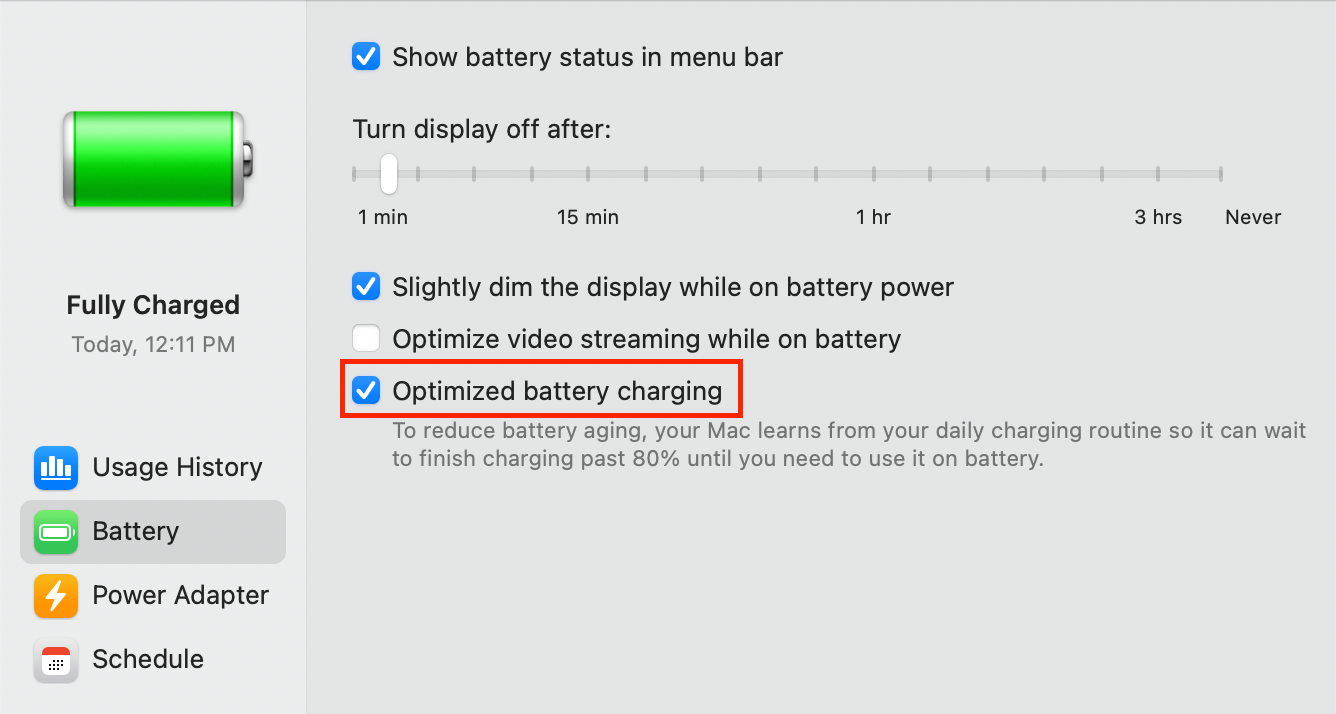Is your Mac plugged into a source, but its battery status says Not Charging? Don’t fret; nothing is wrong with your Mac when this happens—at least most of the time. Below are three simple reasons why you might see the Not Charging status on your Mac.
1. Battery Health Management Is Enabled
All MacBook models, both with Intel processors and Apple silicon chips, use Battery Health Management or Optimized Battery Charging feature. This feature improves your battery’s lifespan by slowing down the rate of its chemical aging and reducing the wear on the battery.

When this is turned on, your Mac might pause charging until it drains to 90% or lower. If you want to continue charging, you can turn Optimized Battery Charging off in the Battery preferences.
2. The Power Source Is Too Weak to Charge Your Battery
Your MacBook may be connected to a power source that provides just enough energy to power on your Mac, but not enough to charge its battery. This can happen when you’re using a low-wattage adapter. Every MacBook comes with a power adapter with specific wattage for its battery. You should make sure you always use that wattage, or higher.
While a low-wattage adapter can keep a MacBook running, it may not be enough power to charge your battery—sometimes, your battery can even drain while plugged into a low-power source, especially when you’re doing heavy work with your Mac.
3. Your Mac Is Running High-Energy Tasks
Sometimes, you’re using your Mac to do high-performance tasks. This may entail a lot more power usage than what your power source can provide.
GPU-intensive apps, like video editing software and certain media players, are known to drain batteries quickly. The same is true for CPU and GPU-intensive games.
You Might Need to Troubleshoot Your Battery
If the reasons mentioned above are not the culprits, you can also troubleshoot other laptop power problems, like issues with the adapter cable or connector.
Other MacBook battery Solutions
Most often than not, your MacBook battery not charging isn’t a cause for concern. But if you’re still worried, it’s best to speak with an Apple-Authorized Service Provider for more support.